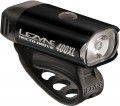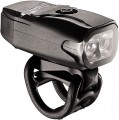LED
The number of individual light emitting diodes (LED) in the bike light (see "Type").
A larger number of LEDs, on the one hand, makes it possible to achieve greater brightness of the headlight and reduces the likelihood of its complete failure (the failure of one LED does not lead to a loss of lamp operation). On the other hand, the technical features of modern LEDs are such that manufacturers prefer to put one bright single-chip LED instead of several case ones into powerful “long-range” bicycle lights. On the third, there can also be several single-chip LEDs, to increase reliability and provide additional adjustments (for example, changing the brightness by turning on / off individual LEDs). Therefore, only lamps of the same price category should be compared by this parameter. At the same time, “multiple-charged” models, in addition to the described advantages, also have disadvantages — they are, usually, more complicated, more expensive and larger.
Output
Luminous flux given out by a bicycle headlight (see "Type"); in models with adjustable brightness, usually, the maximum value is indicated.
The
higher the luminous flux, the brighter the headlight and the greater the illumination range (see below). On the other hand, this characteristic significantly affects the dimensions, weight and cost of the flashlight, despite the fact that high brightness is not always required — for example, for episodic trips along well-lit city streets, a powerful flashlight is not needed. Therefore, it is worth choosing a bicycle headlight according to the luminous flux, taking into account the features of the planned application; specific recommendations for different cases (city, highway, rough terrain, etc.) can be found in special sources. Also, do not forget that the actual lighting efficiency depends not only on the brightness, but also on the shape of the light spot.
Operating modes
The number of individual operating modes provided in the bike headlight (see "Type"). Usually, this parameter takes into account all available adjustments: for example, for a model with 3 brightness adjustments and the ability to work in the stroboscope format, 6 modes will be indicated (3 brightness values \u200b\u200bfor constant light and the same for a stroboscope). A specific set of modes in each case should be clarified separately, but in general, the more there are, the more options for use the headlight suggests, the higher the likelihood that an unforeseen situation will not take the owner by surprise.
Brightness modes
The number of brightness modes makes it possible to adjust the intensity of the flashlight and adjust it to the necessary needs. Accordingly, the more modes, the more flexible options for using the model (even not only in cycling needs). So the most popular are models with
brightness control in 3 or
4 positions.
Max. operating time
The longest time of continuous operation without replacing or recharging the power source, provided by a bicycle headlight (see "Type") in constant light mode (if there is a flashing mode, the operation time is usually longer, but it cannot be called the main one). This item indicates the value for the most economical format of operation, at minimum brightness; therefore, the actual headlight run time will generally be lower than advertised. It is also worth considering that many replaceable batteries (see "Power") are available in different capacities and have different durability — which means that battery life will also depend on the quality of the batteries. At the same time, this indicator is quite suitable for evaluating bicycle headlights and for comparing them with each other.
Max. brightness operation time
Bicycle headlight battery life at maximum brightness (see "Type"). This indicator is closer to reality than the maximum operating time (see above): in fact, it indicates the time that the flashlight is guaranteed to be able to work without replacing or recharging the battery. However note that some batteries (see "Power") can be produced in different capacities, and the manufacturer usually indicates the operating time for the most capacious (and expensive) batteries.
Water resistance
The presence of
water protection can have an IP standard, which indicates the degree of protection against dust (first digit) and against moisture (second digit). Often the first digit may be omitted and changed to X (IPX6 instead of IP66), since water protection is the key parameter. Water protection is characterized by different numbers, where a larger value is considered more advanced. And the IPX7 models are completely capable of working under water for some time.

